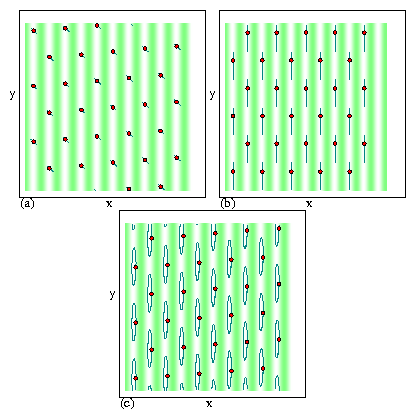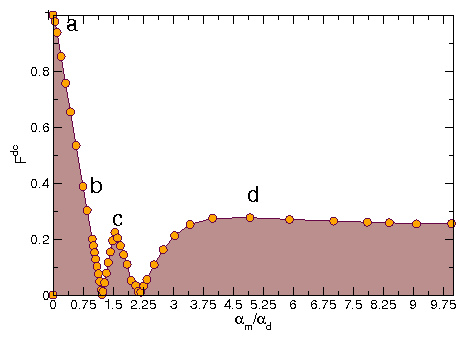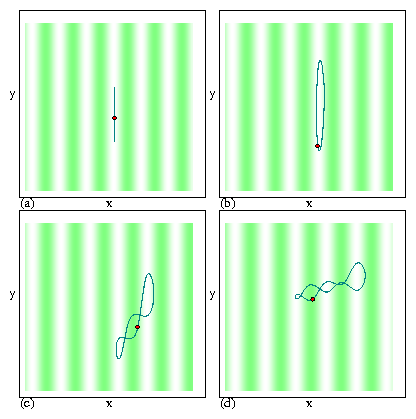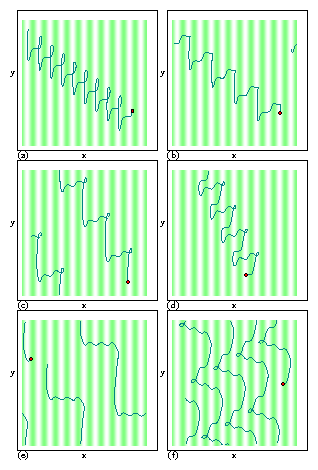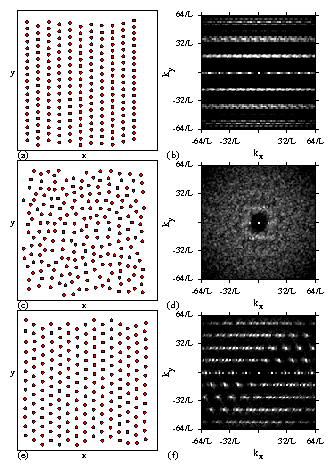 Figure 3:
(a) 〈Vx〉 vs Fdc at Ap = 1.0
for
αm/αd = 0.0 (brown),
0.577 (light blue),
0.98 (dark purple),
1.33 (light purple),
2.06 (dark orange),
3.042 (light orange),
4.0 (dark red),
4.92 (light red),
7.0 (dark green),
8.407 (light green),
9.962 (dark blue),
and 11.147 (black),
from left to right.
Here 〈Vx〉 exhibits quantized values
corresponding to specific steps.
(b) The corresponding values of
〈Vy〉 vs Fdc, which contains steps
that are not quantized.
Figure 3:
(a) 〈Vx〉 vs Fdc at Ap = 1.0
for
αm/αd = 0.0 (brown),
0.577 (light blue),
0.98 (dark purple),
1.33 (light purple),
2.06 (dark orange),
3.042 (light orange),
4.0 (dark red),
4.92 (light red),
7.0 (dark green),
8.407 (light green),
9.962 (dark blue),
and 11.147 (black),
from left to right.
Here 〈Vx〉 exhibits quantized values
corresponding to specific steps.
(b) The corresponding values of
〈Vy〉 vs Fdc, which contains steps
that are not quantized.
|
